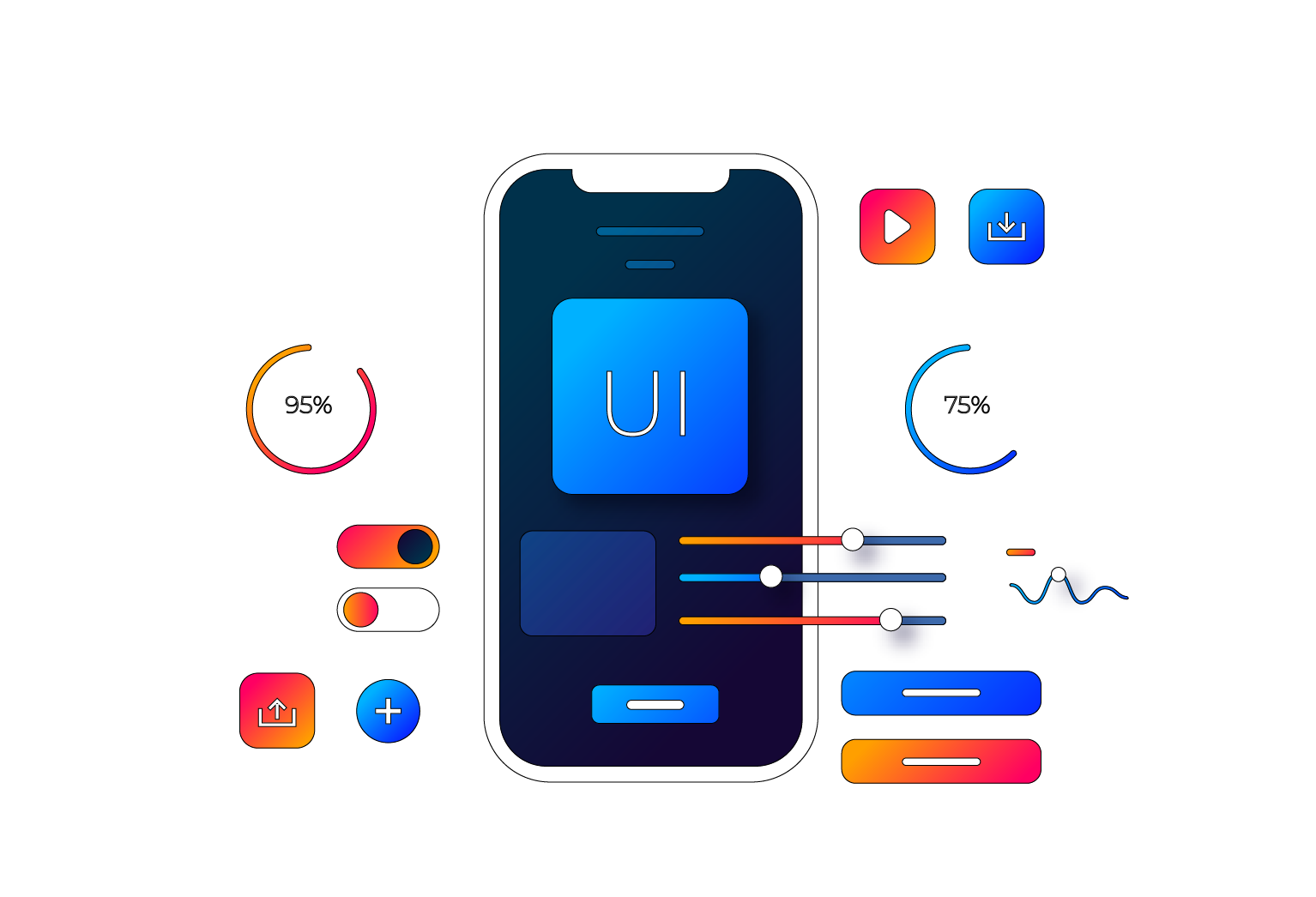The Epic Clash of React Native vs Swift in the Realm of Mobile App Mastery
Two warriors with different arsenals and philosophies arise in the jam-packed field of mobile application development: React Native and Swift. These platforms, which are contending to make consistent mobile experiences, address contradicting ways of thinking. Utilizing the force of JavaScript, it vows to rule the two iOS and Android markets with a single codebase called React Native.
Adherents acclaim its effectiveness in reducing development time and costs, narrating stories of code reuse and blazingly speedy iterations. Expectations are palpable as the crowd assembles in the battle of React Native vs Swift. But does it hold up against Swift’s strength?
narrating stories of code reuse and blazingly speedy iterations. Expectations are palpable as the crowd assembles in the battle of React Native vs Swift. But does it hold up against Swift’s strength?
Allow me to acquaint you with Swift, the brainchild of Apple, dressed in a native development layer. It advances direct integration with iOS ecosystems and battles for performance and optimization. Its crowd of developers gladly announces their devotion to Apple’s guidelines, making applications that capability immaculately inside the iOS framework and augment the advantages of Apple’s hardware and software integration. Nonetheless, in the wide universe of mobile platforms, does its exclusive allegiance restrict its scope and versatility?
Will Swift’s optimization and experience win out and give smooth, platform-specific experiences? Or on the other hand, will the cross-platform virtuoso of React Native work as a power, permitting developers to take over several markets at once? The competition is serious, a lot is on the line, and the outcome is unpredictable. Come explore the ins and outs of this titanic matchup between Swift vs React Native, as well as their benefits and drawbacks. So settle in, get your popcorn, and let the clash of titans start!
Pushing the Performance Envelope with React Native and Swift for Next-Generation Apps
Both Swift and React Native are viable tools for making mobile applications, however, they enjoy various benefits and performance contemplations. While choosing between React Native vs Swift, it’s basic to consider the project’s extraordinary performance needs in contrast with React Native’s benefits in cross-platform similarity and development speed. Swift is unmistakably appropriate for Apple’s ecosystem since it is a native language for iOS development.
This offers a benefit concerning performance, especially while overseeing unpredictable UI interactions or computation-intensive tasks. Since Swift has direct admittance to iOS hardware and APIs, developers can improve their code for extreme performance. Swift likewise gains from Apple’s ongoing improvements and platform optimizations for iOS, which ensure brilliant responsiveness and performance.
On the other hand, React Native has various advantages as far as cross-platform similarity and development speed, even though it isn’t as normally performant as Swift. React Native makes a layer of abstraction between the code and the hardware of the device by connecting native components with JavaScript. Although this might bring about marginally worse performance when contrasted with Swift, React Native balances this by utilizing optimization strategies like code profiling and native module integration. Besides, despite conceivable performance compromises, React Native’s hot-reloading feature empowers speedy iterations during development, expanding efficiency.
Exploring Swift and React Native UI Magic Through Kaleidoscopic Lenses
Two notable systems for developing mobile applications are React Native and Swift, every one of which adopts an alternate strategy for designing UIs. Given JavaScript, React Native gives a cross-platform solution that empowers developers to make reusable interface components. This versatility makes it easier for fast development on different platforms.
However, now and again there are execution issues with React Native due to its dependence on JavaScript, especially when complicated UI animations are involved. Nonetheless, Swift, the programming language used to make iOS applications, offers a native solution made particularly for Apple’s ecosystem.  Swift’s native philosophy ensures top execution and consistent iOS device integration, making user interfaces (UIs) more fluid. UIKit and SwiftUI are comprehensive tools and libraries that developers utilizing Swift can use to design interfaces and create engaging user experiences.
Swift’s native philosophy ensures top execution and consistent iOS device integration, making user interfaces (UIs) more fluid. UIKit and SwiftUI are comprehensive tools and libraries that developers utilizing Swift can use to design interfaces and create engaging user experiences.
In terms of user interface development, there is a compromise between native execution and cross-platform similarity while contrasting iOS Swift vs React Native. For projects focusing on a huge client base, React Native succeeds at smoothing out development across the iOS and Android platforms. However, given its JavaScript base, it may very well be more enthusiastic to accomplish native-level UI performance, particularly for applications with a ton of illustrations.
Swift, then again, is the suggested choice for projects that are exclusive to iOS due to its native methodology, which puts performance and platform incorporation first. By utilizing Swift, programmers can make UIs that are responsive and fluid, making the most of the abilities of iOS devices. Swift’s native optimization ensures unrivaled client encounters on Apple devices, even though it could require separate development efforts for iOS and Android.
Tracing the Growth Patterns of React Native and Swift in Platform Maturity
The development of mobile applications can be drawn closer by diversely utilizing React Native and Swift. With Facebook’s React Native, developers can utilize JavaScript and React to make cross-platform applications. On the other hand, Apple has a programming language called Swift that is designed particularly for making iOS and macOS applications.
Swift might enjoy an upper hand over different platforms in terms of platform maturity given its close integration with Apple’s ecosystem. Swift enjoys the benefit of standard updates, an abundance of documentation, and committed Apple support. Accordingly, the platform is strong and well-developed, intently matching the latest iOS features and particulars. Swift developers can undoubtedly take advantage of native iOS highlights, ensuring top execution and client experience.
React Native has, nevertheless, cutting edge altogether with regards to platform maturity over time. React Native was at first reprimanded for its poor performance and limited admittance to native features, however it has since changed. Facebook and the open-source community have endeavored to determine these issues, further developing native module backing and execution. With further developed tools and resources, the platform currently gives a more evolved development environment that makes it easier for developers to create cross-platform applications that are of high quality quickly.
Swift is perfect at offering a native iOS experience, however, React Native’s cross-platform highlights are more interesting to developers who need to contact a more extensive crowd on additional platforms. The decision between Swift vs React Native frequently boils down to the target audience, development schedules, and project requirements. Eventually, the two platforms are still developing, giving developers various choices to rejuvenate their application ideas.
Tackling the Intricate Paths of Swift and React Native Learning Processes
Project prerequisites, individual learning styles, and prior experience all influence how steep the learning curve is for iOS Swift vs React Native development. Apple’s programming language, Swift, is designed particularly for making iOS applications. For people who are familiar with programming concepts, particularly those who have worked with languages like Java or C# previously, its syntax structure was very basic and easy to understand.
Grasping iOS-specific frameworks and design patterns is fundamental for mastering Swift,  though it can be challenging for novices. In any case, React Native, a JavaScript framework for making mobile applications, gives web developers a more accessible entry point. Its declarative syntax and JavaScript usage work with simpler code sharing across platforms and faster development cycles. Be that as it may, working with platform-explicit content can make React Native’s learning curve even steeper.
though it can be challenging for novices. In any case, React Native, a JavaScript framework for making mobile applications, gives web developers a more accessible entry point. Its declarative syntax and JavaScript usage work with simpler code sharing across platforms and faster development cycles. Be that as it may, working with platform-explicit content can make React Native’s learning curve even steeper.
Contrasted with Swift, which requires learning a new language and concepts for iOS, React Native’s knowledge of JavaScript and its environment can facilitate the expectation to absorb information for developers changing from web development. Then again, given its thorough documentation and seamless integration with Apple’s ecosystem, prepared iOS developers could see Swift as easier to use.
Eventually, the developer’s experience level and the demands of the project decide how steep the learning curve is for React Native vs Swift. Both enjoy benefits and disadvantages, and the choice between them is impacted by various factors, including the target audience, team expertise, and project scope.
Traversing the Intricacies of Swift’s Unique DNA and Evolutionary Path
Swift is distinct for various reasons. First of all, it’s a strong, contemporary programming language created by Apple that focuses on security and convenience. As a result of its expressive and compact syntax structure, developers can compose more meaningful and maintainable code. Also, Swift adds state-of-the-art highlights like generics, which further develop code adaptability and reusability, and options, resulting in securely dealing with nil values.
Swift is a unique native programming language for iOS application development when contrasted with React Native. While JavaScript can be utilized to foster cross-platform applications with React Native, Swift gives quicker application development and native iOS API access. Furthermore, contrasted with JavaScript, Swift’s static typing ensures fewer runtime errors, working on the overall dependability of iOS applications.
Swift also appreciates powerful help from the Apple environment, which incorporates abundant documentation and frequent updates. Its fuse with Apple’s integrated development environment, Xcode, gives developers admittance to strong debugging and testing capacities. In the combat of iOS Swift vs React Native, Swift stands apart for iOS application development because of its unique blend of performance, modern features, and native iOS support.
Fulfill Your Swift Development Dreams with Pattem Digital’s Specialized Services
Upraise your digital goals by working with our custom Swift app development company, where creativity and accuracy impact. Utilizing the force of best-in-class Swift technology, we make vivid encounters that are customized to your specific vision. Our skilled staff ensures smooth reconciliation, giving unparalleled performance and snappy elegance. Select us for an exceptional consonance in which each line of code cautiously designs out your victory.





